Fragments reimagined: Anssi Kasitonni fantastically reconstructs
Beaconsfield’s lost architecture
Beaconsfield gallery in Vauxhall, London, is contained
within the remaining third of a grand Victorian Ragged School building, largely
demolished to make way for the expanded railway. As a project for the award of
the Below Zero Finnish Art Award, Anssi Kasitonni reimagined the lost pediment
of the building, but as Will Jennings encountered, he did so in fantastical,
playful ways that bring new stories to the history.
When Anssi Kasitonni was told he was recipient of the 2025
Below Zero Finnish Art Award, he wasn’t sure what work he would make. An artist
from Vilppula, Finland, Kasitonni has no single artistic medium, though stopframe puppet animations recur, but there are also inventive toy-like systems, sculptures, photographs, all kinds of things but always with humour and play. After
being given the opportunity to make a new work at Beaconsfield gallery in
London – the fourth artist to receive the award that began in 2018 – he wanted
to explore his ideas with a similarly playful, open mind.
2025 marks the 30th anniversary of Beaconsfield gallery, an organisation not only set up to exhibit contemporary art as a normal gallery, but also act as a laboratory for experimentation and sharing progressive cultural ideas. Its architecture is also not like that of a normal gallery, based in the remaining section of a 19th century Ragged School in Vauxhall, Lambeth, it is spread across a sequence of spaces from a planted entrance courtyard to semi-subterranean café and welcoming space, through to deep arches under the railway viaduct supporting trains racing to Waterloo Station, and then, most uniquely, a first floor stepped, sloped, and richly daylit former classroom.
![]()
![]()
While the building is rich in history and curiosity, it is only a fragment of what it once was. The expansion of the railway under which Beaconsfield’s dark, atmospheric arch spaces sit led to the destruction of the other two thirds of the original school, industrial progress forcing a violent diagonal cut across the site and requiring the demolition of not only the sister wing matching that which remains, but also the grand central section of the school that housed reception rooms, replete with a civic portico and pediment upon which an oversized, grand pediment sat.
After arriving at Beaconsfield and its unique architecture, Kasitonni was curious. Looking through the archive and talking to co-directors David Crawforth and Naomi Siderfin about the place and its history, his curiosity landed upon the sculptural pediment. In the few archive images that exist, detail cannot be made out though it can clearly be read as a florid, intricate, and undulating motif with a shield at its centre. Zooming deeper and deeper into the image, Kasitonni’s mind began to fill in the gaps of legibility and create ideas of the elements and motifs of the sculpture.
![]()
![]()
What he imagined, however, was not 100% accurate, and though may frustrate architectural historians does add new layers and ideas into the history of Beaconsfield. He created a maquette to articulate his imaginings, the shield at the centre supplanted by a crowned figure, but within the swirls and carvings of the hard-to-read engraved archive image, new ideas: a car, a peacock, a horse’s head. And, also unlike the monochrome source material, the model is painted in a rainbow of colour, glossy and luminous as if to create further separation from historical truth and creative imagination.
Alongside previous animated film works, the model is on show in Kasitonni’s solo exhibition at Beaconsfield marking the culmination of his Below Zero award, titled Gentle Means and Easy Tasks. But the ideas didn’t stop with the model, it spawned something altogether more dramatic. Upstairs, in the former teaching room – a space with an unusually sloped and stepped floor, overwatched by a single porthole window – the artist has scaled up his maquette to the size it would have been as if the façade still existed. Here, the details are far more legible, the peacock and car remain, but the horses head can now be read as a chess piece, and the trio are joined by eclectic, chaotic, others: a fish, button, elephant, castle, dragon, plants, mushrooms, cat, pineapple, and a yellow submarine.
![]()
It's a feverdream of oddities, objects and characters the artist discovered in his wanderings and explorations of the local area, but all mixed up with his existent knowledge, cliches, and ideas of spending time as a creative in the UK. The yellow submarine is that Yellow Submarine of Beatles’ fame, which evidently has no connection to Vauxhall – but Elephant and Castle is nearby, the cat once lived in the gallery, the pineapple speaks to the nearby Tradescant brothers who in the 1600s were the first to grow the fruit in England.
It is not only a curious object of architectural detachment in its content, but also its aesthetic. Dayglow and vibrant in a breadth of colour, it also carries a magnificent sheen. Kasitonni made his sculpture from cardboard, plaster, and expanding foam, materials he was used to in the making of his films and cartoon stages, but here deployed at a new scale. Then, the whole object was sent to Essex to be industrially chromed, then returned to Beaconsfield to be painted by the artist. Standing back, the work seems solid and robust, up close the materiality is clear: cardboard structure can be read under the chrome coating, joints where its sections are pushed together can be seen snaking around the characters, and to the rear the whole thing is proudly presented with its timber frame and supporting legs visible. These are not marks accidently left in the work, but important elements of it that remind us of the creative process and labour, but also of the construct of history, the way in which places are made through culture, and of the precarity and delicate nature of that which seems – or once seemed – secure.
![]()
![]()
![]()
![]()
The Ragged Schools of Lambeth were part of the many Victorian philanthropic, civic gestures seeking to repair the very visible gaps of inequality in UK cities through the Industrial Revolution. No doubt the school had great impact, along with the parks, social housing, and other urban gestures, but evidently as the building didn’t stop the progress of the railways, the school didn’t stop destitution and pauperism – a watercolour held in the Lambeth Council archives shows the street post-school but pre-railway-expansion with the shell of the school amongst piles of rubble which children have clambered up, chickens wandering the street, a child in rags, and mother holding her baby.
In 1995, when Beaconsfield was founded, the London artworld was spread across the city but growing and looking for a place to land. While there was a strong scene in the Vauxhall-Kennington area – including City Racing, a ten-year gallery created by artists including Paul Noble and Keith Coventry in a former betting shop, and Gasworks, still running successfully – the weight of the movement moved to Hoxton and Shoreditch for the Britpop-fuelled, New Labour growth of the cultural sector that lead to many of the gallerists and makers now in the artworld and artmarket high earner’s lists. While perhaps possessing one of the most architecturally interesting spaces in the city, Beaconsfield are not in those lists, but Crawforth and Siderfin charted a different path for the laboratory gallery.
![]()
![]()
![]()
![]()
The artworld may seem secure, perhaps as secure as those grand Victorian institutions and buildings that Beaconsfield now inhabits, but it is not. The 21st century art market and cultural sector is precarious and often also built on inequalities. The porticos, pediments, statuary, and grand facades that decorate the industry, putting on a strong face, can crumble as quickly as the Ragged School did when confronted with such as force of capital expansion the railway represented. Beaconsfield are not of the 1990s Hoxton Square Britart vibe, they work towards a different ecology, as represented by the Below Zero Finnish Art Award: designed to reach beyond predictable ecosystems; allow space, money, and time to the selected artist to experiment; and create space for the unexpected, often hard-to-market creativity that needs a home but might not be afforded it within current structures.
Kasitonni’s faux-pediment will be (carefully) flatpacked into crates and leave its spiritual home of Vauxhall to become a detached art object. It will next be presented at Serlachius, a foundation with a complex of buildings not far from the artist’s birthplace in Finland. Re-presented to a non-Vauxhall audience in a very different architecture, the pediment will need to be explained so that its context and narratives will be understood. Just as the Ragged School lost two of its architectural volumes but carried on in a new form with new meaning, its recently-commissioned fantastical pediment too must soon become detached from the institution and find a new future stories and histories.
2025 marks the 30th anniversary of Beaconsfield gallery, an organisation not only set up to exhibit contemporary art as a normal gallery, but also act as a laboratory for experimentation and sharing progressive cultural ideas. Its architecture is also not like that of a normal gallery, based in the remaining section of a 19th century Ragged School in Vauxhall, Lambeth, it is spread across a sequence of spaces from a planted entrance courtyard to semi-subterranean café and welcoming space, through to deep arches under the railway viaduct supporting trains racing to Waterloo Station, and then, most uniquely, a first floor stepped, sloped, and richly daylit former classroom.


figs.i,ii
While the building is rich in history and curiosity, it is only a fragment of what it once was. The expansion of the railway under which Beaconsfield’s dark, atmospheric arch spaces sit led to the destruction of the other two thirds of the original school, industrial progress forcing a violent diagonal cut across the site and requiring the demolition of not only the sister wing matching that which remains, but also the grand central section of the school that housed reception rooms, replete with a civic portico and pediment upon which an oversized, grand pediment sat.
After arriving at Beaconsfield and its unique architecture, Kasitonni was curious. Looking through the archive and talking to co-directors David Crawforth and Naomi Siderfin about the place and its history, his curiosity landed upon the sculptural pediment. In the few archive images that exist, detail cannot be made out though it can clearly be read as a florid, intricate, and undulating motif with a shield at its centre. Zooming deeper and deeper into the image, Kasitonni’s mind began to fill in the gaps of legibility and create ideas of the elements and motifs of the sculpture.

figs.iii,iv
What he imagined, however, was not 100% accurate, and though may frustrate architectural historians does add new layers and ideas into the history of Beaconsfield. He created a maquette to articulate his imaginings, the shield at the centre supplanted by a crowned figure, but within the swirls and carvings of the hard-to-read engraved archive image, new ideas: a car, a peacock, a horse’s head. And, also unlike the monochrome source material, the model is painted in a rainbow of colour, glossy and luminous as if to create further separation from historical truth and creative imagination.
Alongside previous animated film works, the model is on show in Kasitonni’s solo exhibition at Beaconsfield marking the culmination of his Below Zero award, titled Gentle Means and Easy Tasks. But the ideas didn’t stop with the model, it spawned something altogether more dramatic. Upstairs, in the former teaching room – a space with an unusually sloped and stepped floor, overwatched by a single porthole window – the artist has scaled up his maquette to the size it would have been as if the façade still existed. Here, the details are far more legible, the peacock and car remain, but the horses head can now be read as a chess piece, and the trio are joined by eclectic, chaotic, others: a fish, button, elephant, castle, dragon, plants, mushrooms, cat, pineapple, and a yellow submarine.
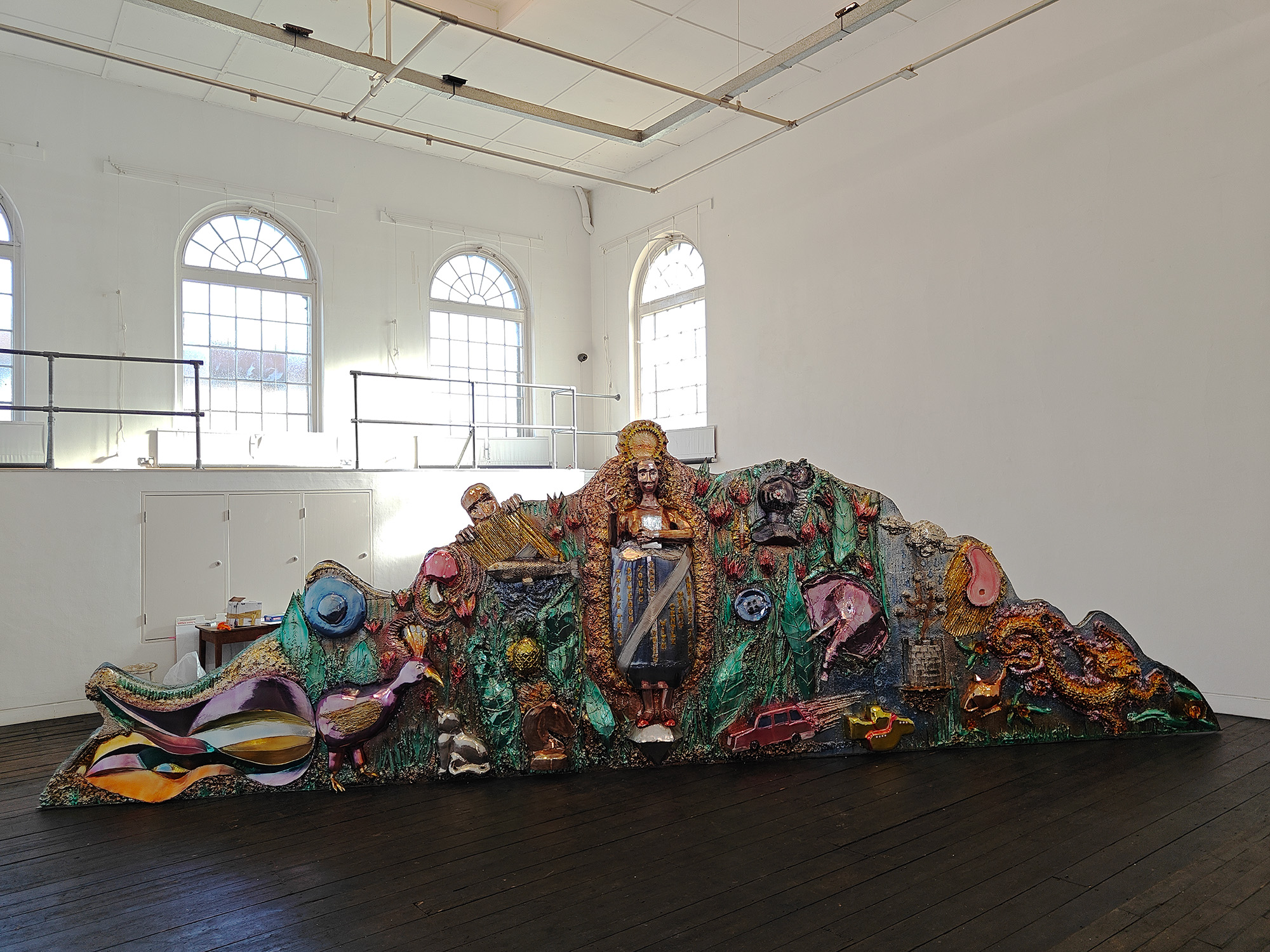
fig.v
It's a feverdream of oddities, objects and characters the artist discovered in his wanderings and explorations of the local area, but all mixed up with his existent knowledge, cliches, and ideas of spending time as a creative in the UK. The yellow submarine is that Yellow Submarine of Beatles’ fame, which evidently has no connection to Vauxhall – but Elephant and Castle is nearby, the cat once lived in the gallery, the pineapple speaks to the nearby Tradescant brothers who in the 1600s were the first to grow the fruit in England.
It is not only a curious object of architectural detachment in its content, but also its aesthetic. Dayglow and vibrant in a breadth of colour, it also carries a magnificent sheen. Kasitonni made his sculpture from cardboard, plaster, and expanding foam, materials he was used to in the making of his films and cartoon stages, but here deployed at a new scale. Then, the whole object was sent to Essex to be industrially chromed, then returned to Beaconsfield to be painted by the artist. Standing back, the work seems solid and robust, up close the materiality is clear: cardboard structure can be read under the chrome coating, joints where its sections are pushed together can be seen snaking around the characters, and to the rear the whole thing is proudly presented with its timber frame and supporting legs visible. These are not marks accidently left in the work, but important elements of it that remind us of the creative process and labour, but also of the construct of history, the way in which places are made through culture, and of the precarity and delicate nature of that which seems – or once seemed – secure.
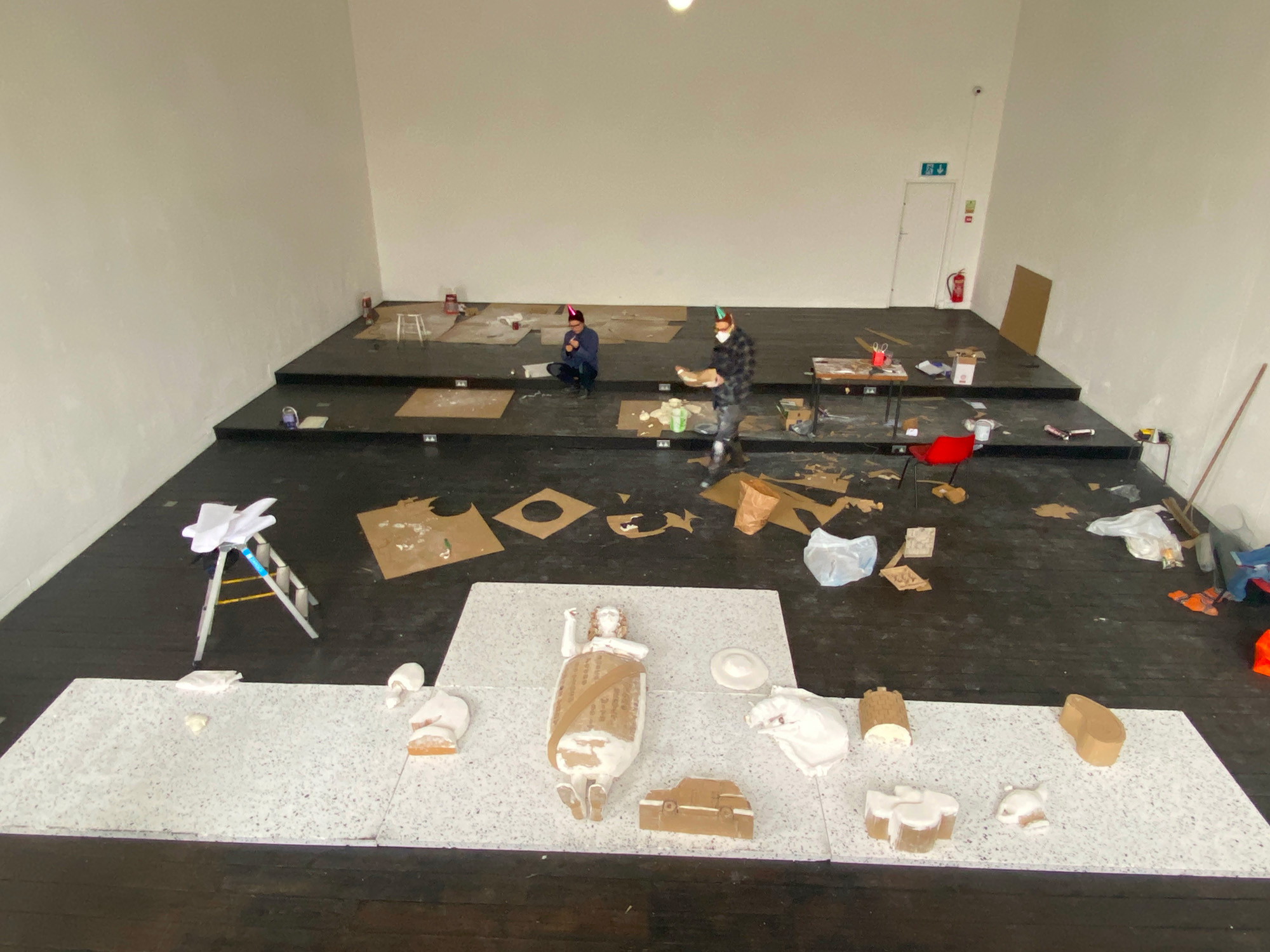

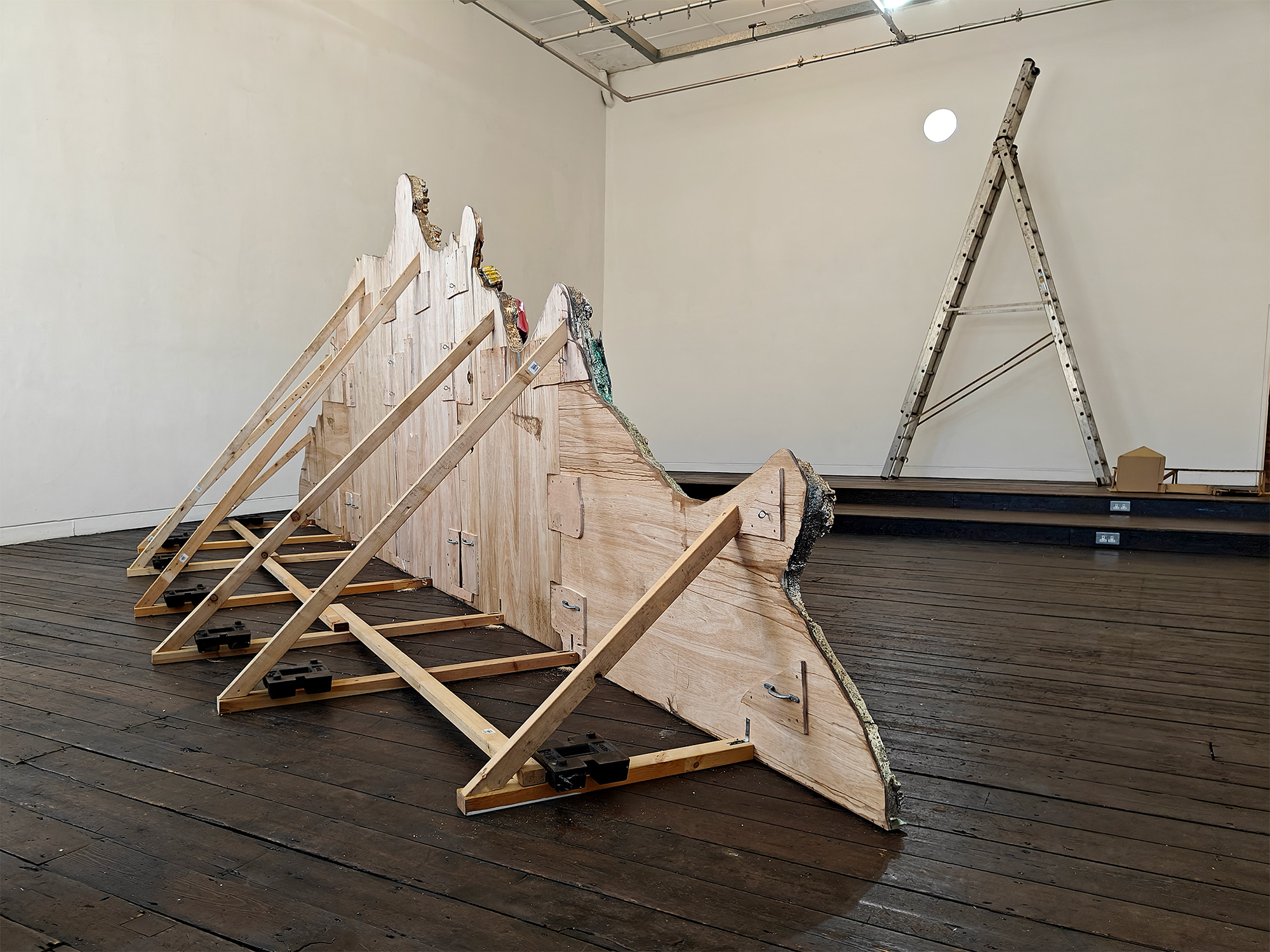
figs.vi-ix
The Ragged Schools of Lambeth were part of the many Victorian philanthropic, civic gestures seeking to repair the very visible gaps of inequality in UK cities through the Industrial Revolution. No doubt the school had great impact, along with the parks, social housing, and other urban gestures, but evidently as the building didn’t stop the progress of the railways, the school didn’t stop destitution and pauperism – a watercolour held in the Lambeth Council archives shows the street post-school but pre-railway-expansion with the shell of the school amongst piles of rubble which children have clambered up, chickens wandering the street, a child in rags, and mother holding her baby.
In 1995, when Beaconsfield was founded, the London artworld was spread across the city but growing and looking for a place to land. While there was a strong scene in the Vauxhall-Kennington area – including City Racing, a ten-year gallery created by artists including Paul Noble and Keith Coventry in a former betting shop, and Gasworks, still running successfully – the weight of the movement moved to Hoxton and Shoreditch for the Britpop-fuelled, New Labour growth of the cultural sector that lead to many of the gallerists and makers now in the artworld and artmarket high earner’s lists. While perhaps possessing one of the most architecturally interesting spaces in the city, Beaconsfield are not in those lists, but Crawforth and Siderfin charted a different path for the laboratory gallery.
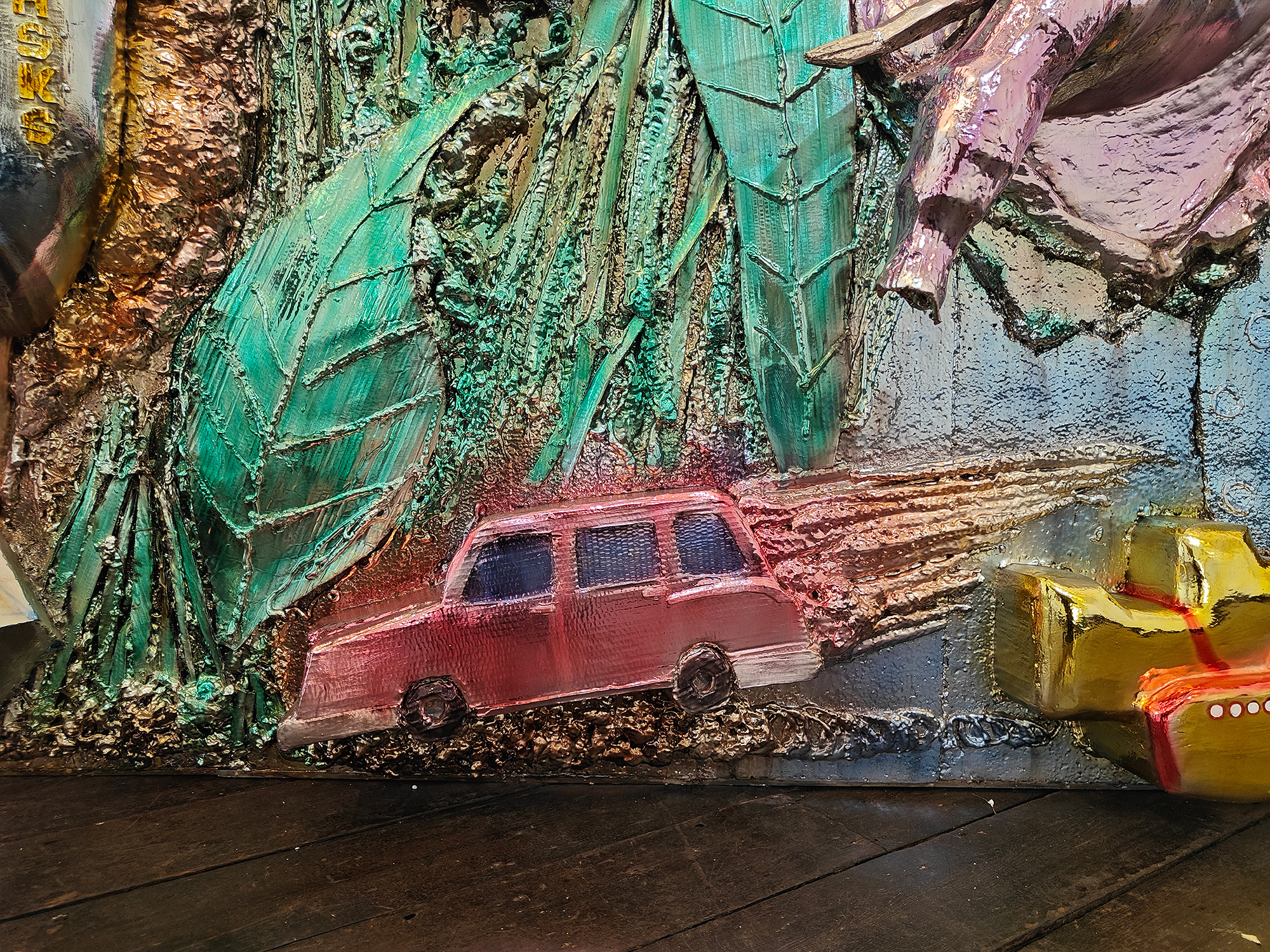

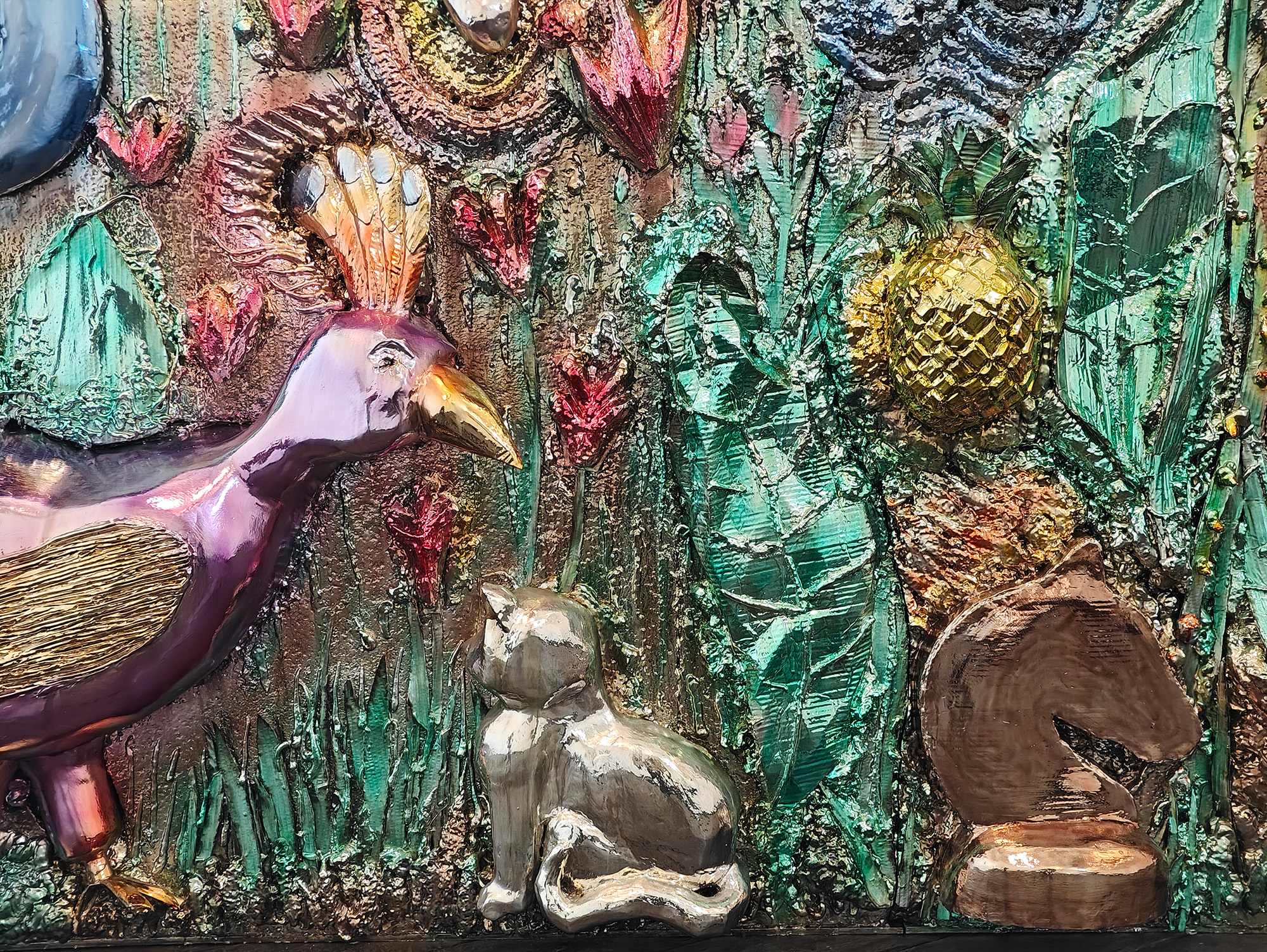
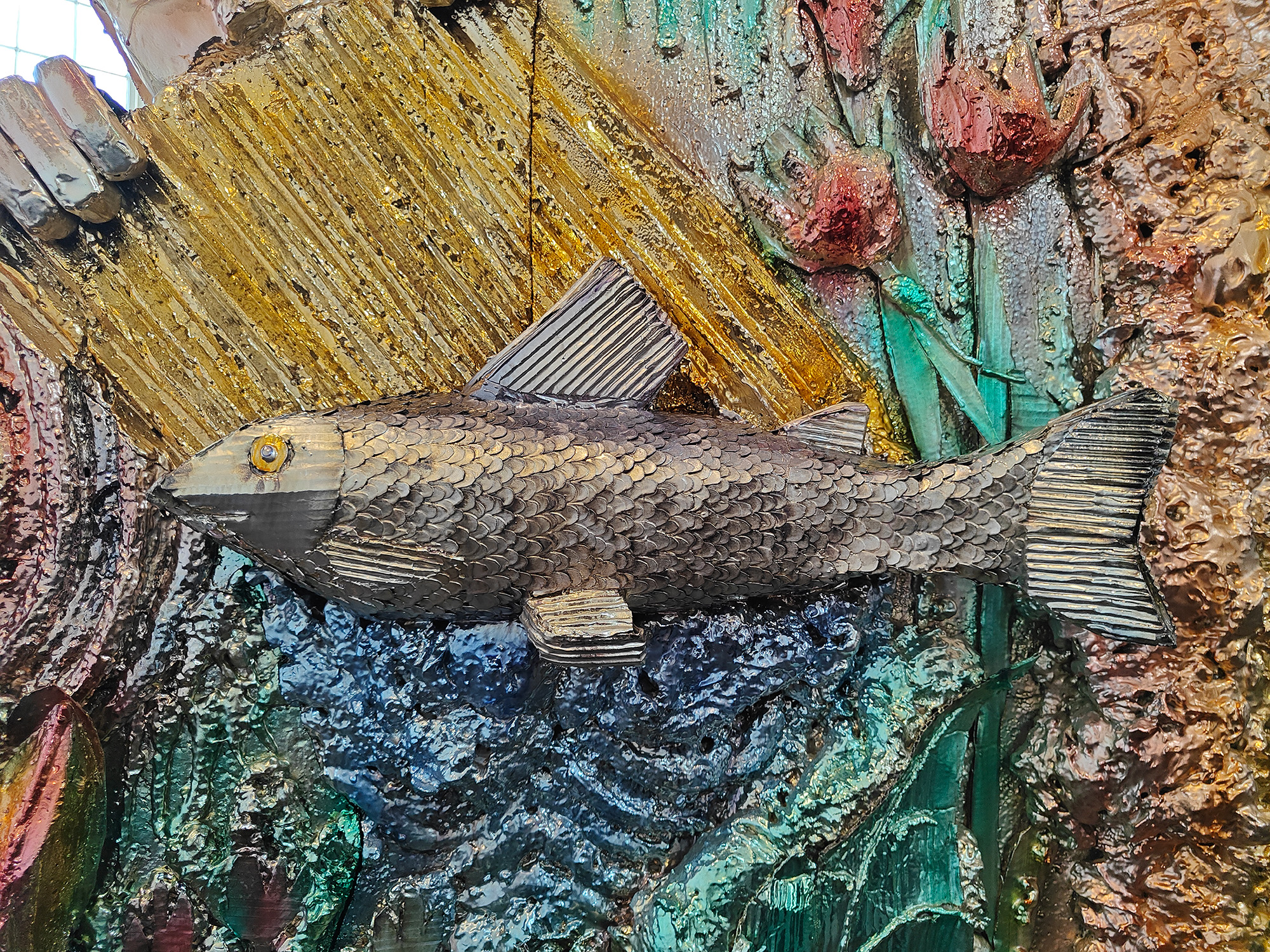
figs.x-xiii
The artworld may seem secure, perhaps as secure as those grand Victorian institutions and buildings that Beaconsfield now inhabits, but it is not. The 21st century art market and cultural sector is precarious and often also built on inequalities. The porticos, pediments, statuary, and grand facades that decorate the industry, putting on a strong face, can crumble as quickly as the Ragged School did when confronted with such as force of capital expansion the railway represented. Beaconsfield are not of the 1990s Hoxton Square Britart vibe, they work towards a different ecology, as represented by the Below Zero Finnish Art Award: designed to reach beyond predictable ecosystems; allow space, money, and time to the selected artist to experiment; and create space for the unexpected, often hard-to-market creativity that needs a home but might not be afforded it within current structures.
Kasitonni’s faux-pediment will be (carefully) flatpacked into crates and leave its spiritual home of Vauxhall to become a detached art object. It will next be presented at Serlachius, a foundation with a complex of buildings not far from the artist’s birthplace in Finland. Re-presented to a non-Vauxhall audience in a very different architecture, the pediment will need to be explained so that its context and narratives will be understood. Just as the Ragged School lost two of its architectural volumes but carried on in a new form with new meaning, its recently-commissioned fantastical pediment too must soon become detached from the institution and find a new future stories and histories.
Anssi Kasitonni is an inventor and builder, whose works draw from the fringes of popular culture, of a world of skateboarders and moped boys partly gone by. The materials and techniques of the artworks vary. Bronzecast reliefs, resin and cardboard sculptures and insightful puppet animations are Kasitonni at his most familiar. While the artworks are humorous, they also speak for equality and humanity. Kasitonni graduated from Lahti Polytechnic Institute of Fine Arts in 2003. Finland’s most prestigious art prize, Ars Fennica, was awarded to him in 2011.
www.anssikasitonni.com
Beaconsfield is an artist-run laboratory dedicated to experimentation and sharing key debates in contemporary art, culture, and public life. This unique commissioning organisation celebrates 30 years as a resource of excellence – a beacon – for the development and presentation of international contemporary art – the field. @beaconsfield_gallery_vauxhall. Beaconsfield gratefully acknowledges the financial support of the Mirisch &
Lebenheim Charitable Foundation.
www.beaconsfield.ltd.uk
Below Zero is the UK-based contemporary art prize for Finnish and Finland-based artists emerging on the international art scene. Commissioned by Beaconsfield London in partnership with Serlachius and the Finnish Institute in the UK and Ireland, supported by the Mirisch & Lebenheim Charitable Foundation. The award offers £20,000, a mentored residency and exhibition at Beaconsfield in London and subsequent exhibition at Serlachius in Mänttä, Finland. The first Below Zero prize took place in
2018.
www.fininst.uk
Will Jennings is a London based writer, visual artist, and educator interested in cities, architecture, and culture. He has written for the RIBA Journal, the Journal of Civic Architecture, Quietus, The Wire, the Guardian, and Icon. He teaches history and theory at UCL Bartlett and Greenwich University, and is director of UK cultural charity Hypha Studios.
www.willjennings.info
www.beaconsfield.ltd.uk
Below Zero is the UK-based contemporary art prize for Finnish and Finland-based artists emerging on the international art scene. Commissioned by Beaconsfield London in partnership with Serlachius and the Finnish Institute in the UK and Ireland, supported by the Mirisch & Lebenheim Charitable Foundation. The award offers £20,000, a mentored residency and exhibition at Beaconsfield in London and subsequent exhibition at Serlachius in Mänttä, Finland. The first Below Zero prize took place in 2018.
www.fininst.uk


